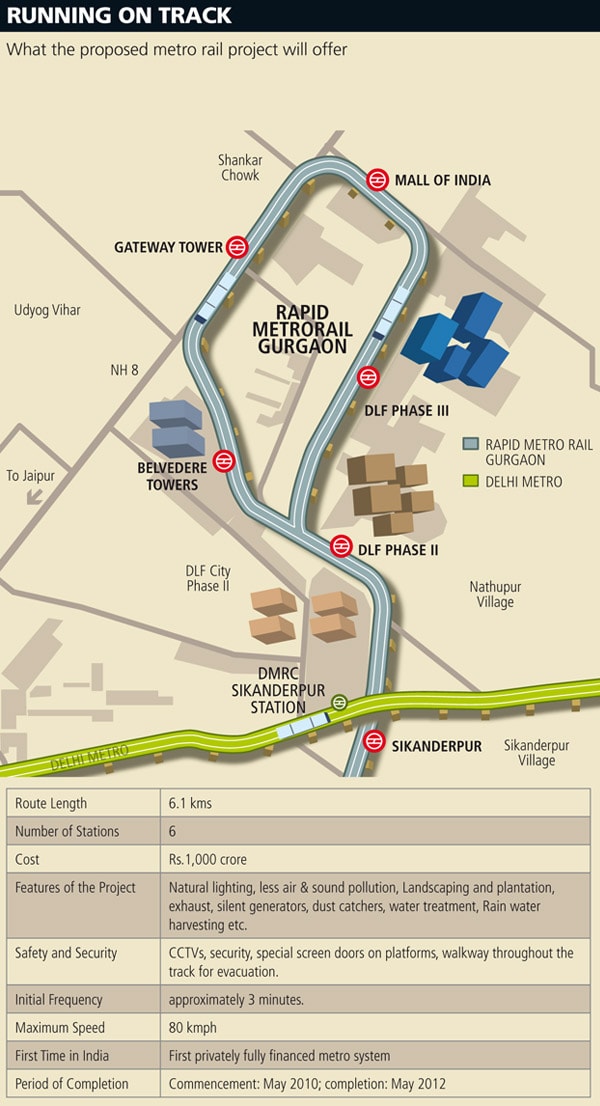
Green Signal for India's First Fully Private Railway Project
India's first fully private railway project is set to take off in Haryana
In early February, the Ministry of Urban Development finally gave its go-ahead for the Rapid Metro Rail Gurgaon’s (RMRG) metro rail project. Earlier, on August 11, 2009, the chief minister of Haryana laid the foundation stone for this project. According to Ramchand Karunakaran, chief of operations and infrastructure, at Infrastructure Leasing & Financial Services (IL&FS), physical work on the project should finally commence by May this year. Completion is expected by May 2012.
What makes this project extremely significant for India is that it is the first wholly private railway project being set up in India. Hitherto, Indian entrepreneurs could own wagons and rakes, and even supply components to the railways. But operating the railway system has remained the exclusive jurisdiction of Indian Railways, a Government of India department. The only exception is the 65 km railway line operated by Mundra Port, which is privately operated. In fact, it was this railway line that persuaded the government to finally permit Indian Railways to enter into Public Private Partnerships (PPPs) with Indian entrepreneurs for railway lines that could serve as port linkages. However, unlike the Mundra railway line, these will be operated by Indian Railways.

Infographics: Hemal Sheth
But what the port linkage policy did, was to create the framework for allowing private participation for feeder lines into the main railways network. Also abetting this move was the creation of the Delhi Metro Rail Corporation (DMRC). But unlike the port linkages which are partly government owned and the DMRC which is entirely government owned, the RMRG project is wholly private. The project cost is expected to be around Rs. 1,000 crore. IL&FS owns 74 percent of the equity share capital and DLF the remaining 26 percent.
For DLF getting this project going was critically significant because its largest land banks are in Haryana, as are its largest real estate projects. Having railway stations next to these projects, and giving these townships connectivity to Delhi, would immediately enhance the real estate value for DLF. It would also give residents of these townships a first-class railway system connecting them to other parts of the country. Significantly, RMRG also managed to work out a deal with the DMRC for allowing both parties to issue tickets to the stations on each other’s networks.
(This story appears in the 30 November, -0001 issue of Forbes India. To visit our Archives, click here.)





